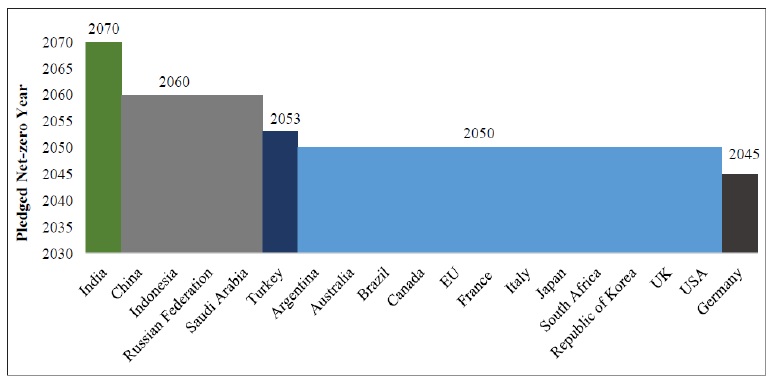Action Plan on Climate Change and the Environment Requirement
DOI:
https://doi.org/10.54741/asejar.2.6.1Keywords:
environment, climate change, agriculture, wildlifeAbstract
Climate change is largely the result of the industrialised countries' disproportionately high annual per capita emissions of greenhouse gases (GHGs) and cumulative emissions of GHGs. India is among the most vulnerable areas because of the global character of the issue, although generating only 4% of the total global emissions (from 1850 to 2019) and maintaining substantially lower per capita emissions than the global average. Despite having less of the guilt for the massive emissions stock, India has demonstrated its leadership in the global economy by making several commitments to low-emission growth and achieving net-zero emissions by 2070.
Through a variety of targeted government initiatives, including increased solar power capacity (installed), higher energy saving targets announced in PAT cycle-VII, and improved green cover made possible by the Green India Mission, India has combined its ambitious climate action goals with its development objectives. As part of its commitment to protecting ecosystems, India currently maintains 75 Ramsar sites for wetlands in addition to a number of legislative and advocacy efforts to preserve and protect mangroves. The National River Conservation Plan (NRCP) and Namami Gange are two initiatives that people are always working to preserve and revitalise rivers.
Downloads
References
Byravan S., & Rajan S. (2012). An evaluation of India’s national action plan on climate change. Center for Development Finance (CDF), IFMR, and Humanities and Social Sciences, IIT Madras.
Rattani V. (2018). Coping with climate change – An analysis of India’s national action plan on climate change. Center for Science and Environment.
https://www.nber.org/papers/w30265.
Daniel Yergin. (2022). Bumps in the energy transition. Finance & Development, International Monetary Fund. Available at: https:// www.imf.org/en/Publications/fandd/issues/2022/12/bumps-in-the-energy-transition-yergin.
https://fsi.nic.in/forest-report-2021-details.
Pujarini Samal, Jyoti Srivastava, S.R. Singarasubramanian, Pooja Nitin Saraf, & Bipin Charles. (2022). Ensemble modeling approach to predict the past and future climate suitability for two mangrove species along the coastal wetlands of peninsular India, Ecological Informatics, 72.
NITI Aayog. (2019). SDG India index & dashboard 2019-20. Available at: https://www.niti.gov.in/sites/ default/files/SDG-India-Index-2.0_27-Dec.pdf
International Renewable Energy Agency (IRENA). (2020). Green hydrogen cost reduction: Scaling up electrolysers to meet the 1.50C Cli¬mate Goal.
Gap between resource availability, requirement pose challenge in NDC implementation: Eco survey. (2021, Jan 29). Economic Times.
Pandey K. (2022). State of India’s environment in figures: India recorded 280 heat wave days across 16 states in 2022 — most in decade. Down To Earth.

Downloads
Published
How to Cite
Issue
Section
ARK
License
Copyright (c) 2023 Dr. Sushil Kumar

This work is licensed under a Creative Commons Attribution 4.0 International License.
Research Articles in 'Applied Science and Engineering Journal for Advanced Research' are Open Access articles published under the Creative Commons CC BY License Creative Commons Attribution 4.0 International License http://creativecommons.org/licenses/by/4.0/. This license allows you to share – copy and redistribute the material in any medium or format. Adapt – remix, transform, and build upon the material for any purpose, even commercially.










